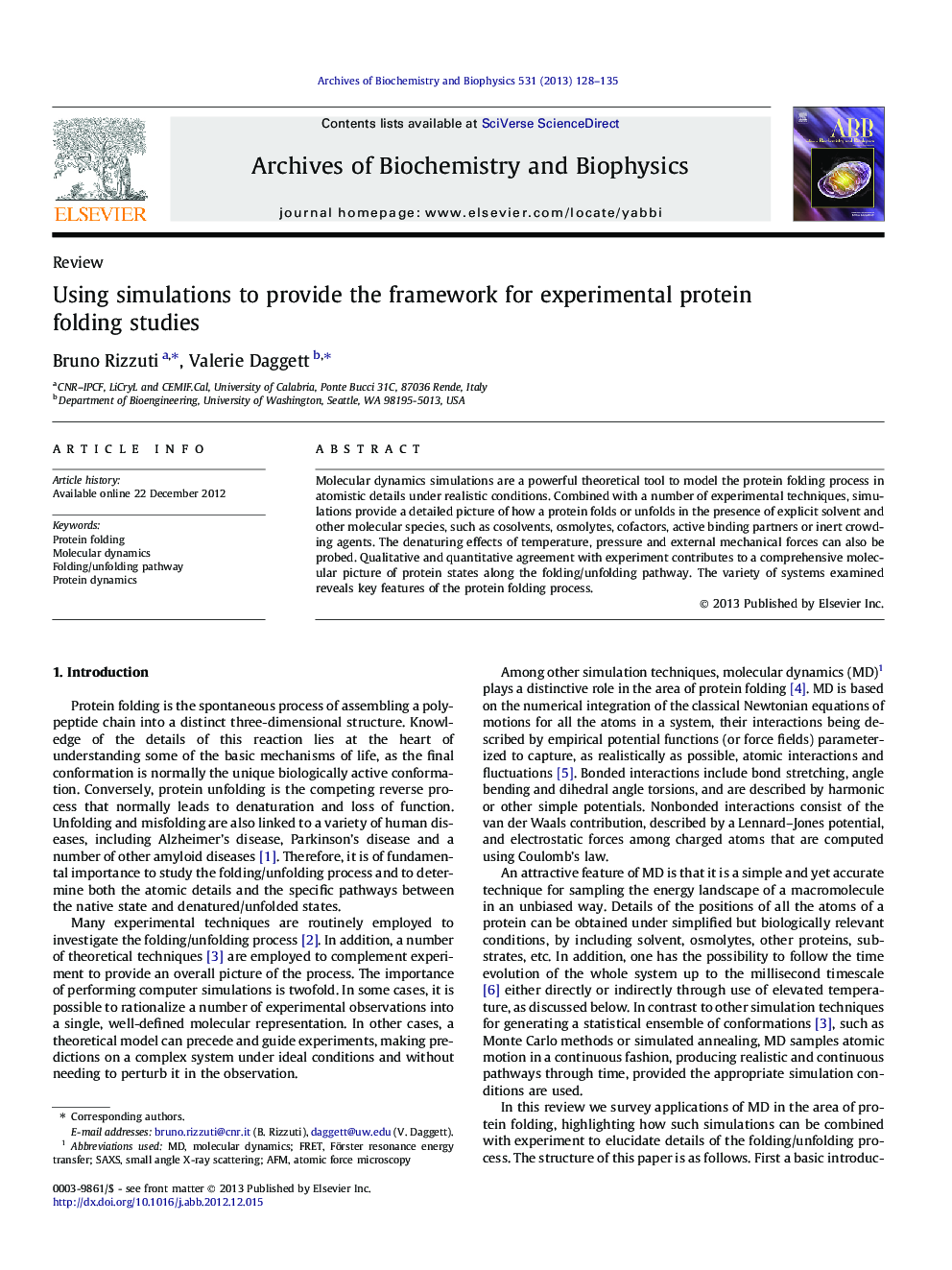| Article ID | Journal | Published Year | Pages | File Type |
|---|---|---|---|---|
| 1925406 | Archives of Biochemistry and Biophysics | 2013 | 8 Pages |
Molecular dynamics simulations are a powerful theoretical tool to model the protein folding process in atomistic details under realistic conditions. Combined with a number of experimental techniques, simulations provide a detailed picture of how a protein folds or unfolds in the presence of explicit solvent and other molecular species, such as cosolvents, osmolytes, cofactors, active binding partners or inert crowding agents. The denaturing effects of temperature, pressure and external mechanical forces can also be probed. Qualitative and quantitative agreement with experiment contributes to a comprehensive molecular picture of protein states along the folding/unfolding pathway. The variety of systems examined reveals key features of the protein folding process.
Graphical abstractFigure optionsDownload full-size imageDownload high-quality image (135 K)Download as PowerPoint slideHighlights► Molecular dynamics (or MD) is one of the most widespread and effective simulation technique. ► Protein folding can be reproduced in simulation under biologically relevant conditions. ► Structural states along the folding/unfolding pathway are characterized at atomic resolution. ► Simulation provides detailed structural models for interpreting experimental data.
